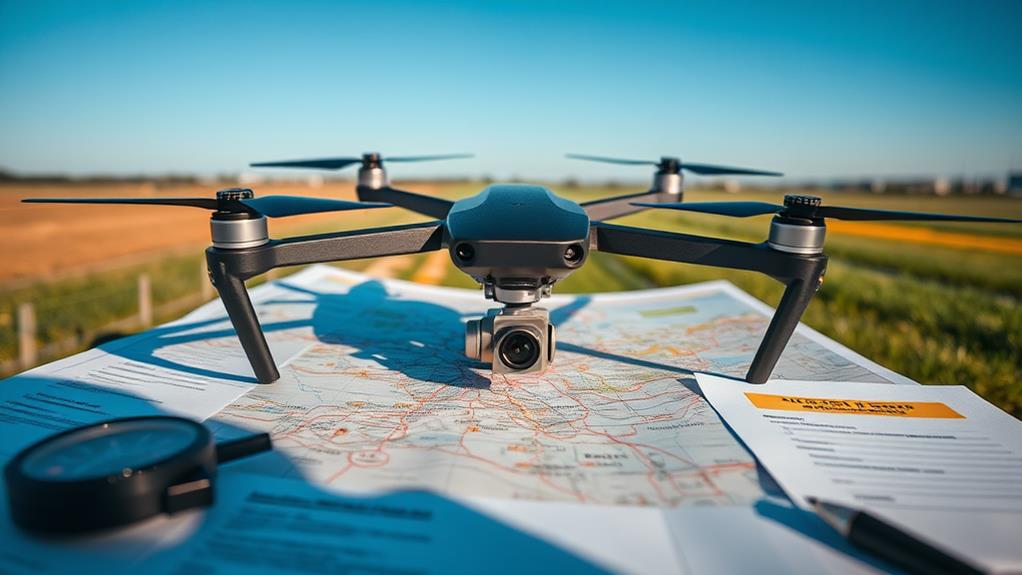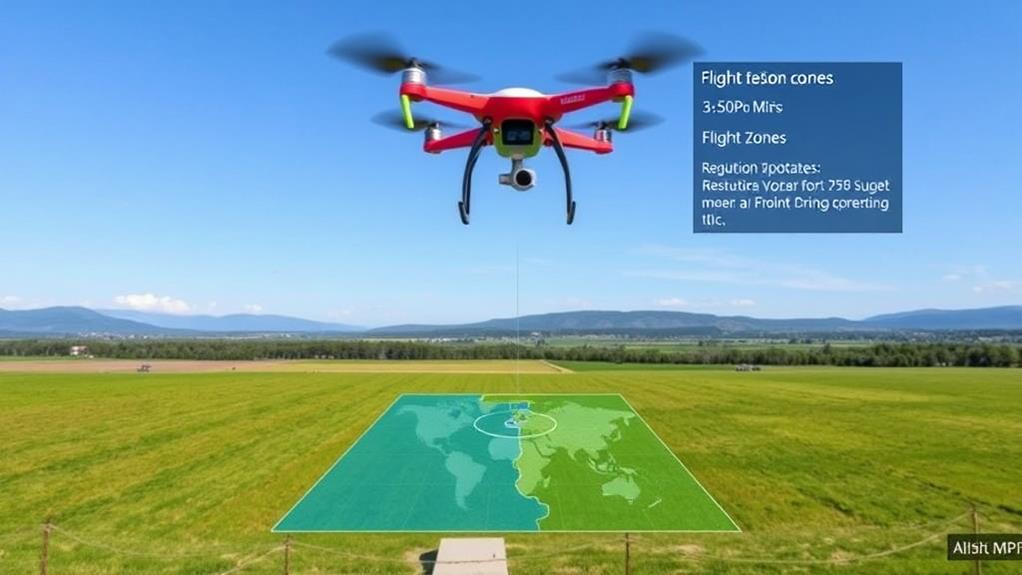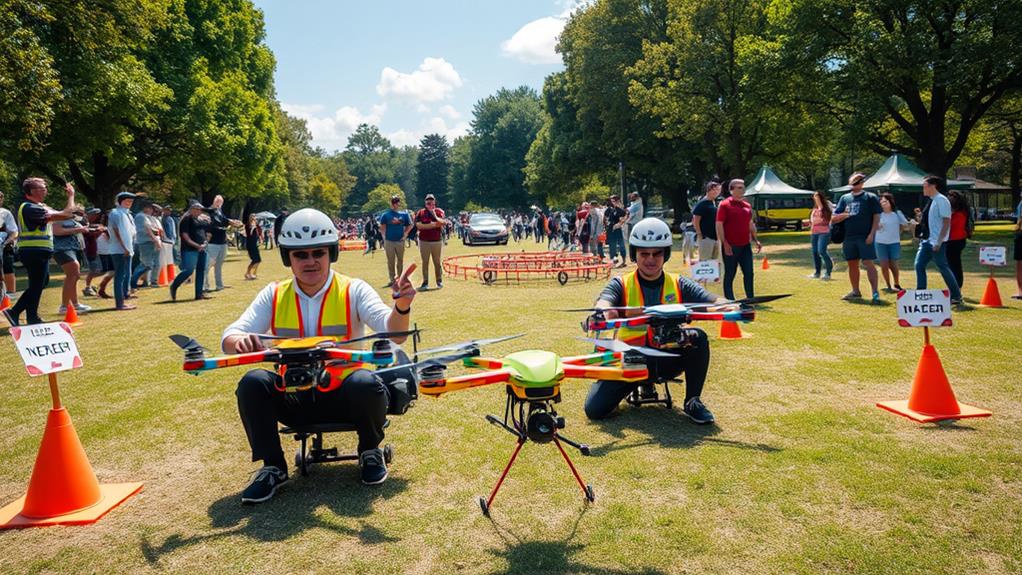To comply with drone racing regulations, start by understanding regulatory requirements, like FAA registration if your drone weighs over 0.55 pounds. Next, prioritize safety by maintaining Visual Line of Sight (VLOS) and conducting pre-flight checks on your equipment. Consider having a Visual Observer to enhance situational awareness. Finally, stay informed on updates by regularly checking the FAA website or joining community forums. By following these tips, you guarantee a safe and legal racing experience, minimizing the risk of violations. There's always more to discover about enhancing your compliance and racing success in this exciting field.
Understand Regulatory Requirements

Understanding regulatory requirements is important for any drone racing enthusiast. To enjoy your hobby legally, you need to become familiar with the FAA's Exception for Recreational Flight under 49 U.S.C. § 44809. This rule allows you to fly drones strictly for recreational purposes, guaranteeing you qualify for relaxed regulations.
First, confirm your drone is registered with the FAA if it weighs more than 0.55 pounds. Registration lasts three years and costs just $5.
You must adhere to operational limitations, which include maintaining visual line of sight (VLOS) and avoiding flights over non-participating individuals. Compliance with these FAA rules is essential for safety.
Additionally, if you're flying in controlled airspace, such as Classes B, C, or D, you'll need prior authorization to fly. In contrast, operations in Class G airspace below 400 feet typically don't require special permissions.
It's also significant to stay informed about local laws that may impose additional restrictions on drone racing activities in your area. By understanding these regulatory requirements, you'll guarantee compliance and enjoy your drone racing experience without legal issues.
Consider taking the Recreational UAS Safety Test to enhance your knowledge further.
Prioritize Safety Measures
After grasping the regulatory requirements, it's time to focus on safety measures that can make your drone racing experience both enjoyable and secure. Always maintain Visual Line of Sight (VLOS) with your drone. This practice guarantees you're aware of its position, preventing collisions with other drones or obstacles.
Incorporating a Visual Observer (VO) during races enhances safety by providing additional situational awareness. The VO can monitor the environment for potential hazards, allowing you to concentrate on flying.
Conducting thorough pre-flight inspections is vital. Check your drone's wires, props, and battery condition to avoid equipment failures that could jeopardize safety.
Familiarize yourself with the flying area and identify potential obstacles or safe landing spots. This preparation minimizes risks associated with unforeseen hazards during racing.
Additionally, confirm compliance with local airspace regulations, particularly when racing near airports or controlled airspace. Prior authorization may be required to avoid safety incidents.
Stay Informed on Updates

Staying informed about the latest drone racing regulations is essential for any racer looking to navigate the skies safely and legally. To keep up with changes, regularly check the FAA's official website at faa.gov/uas for the most current updates on drone operations and recreational rules.
Drones are subject to evolving regulations, so staying informed will help you avoid any compliance issues.
Joining community forums and groups, such as the FPV Freedom Coalition, can also be beneficial. These platforms connect you with fellow racers who share timely updates on regulations and safety practices.
Subscribing to industry newsletters will deliver important information directly to your inbox, keeping you aware of any shifts in the regulatory landscape.
Additionally, attending local or national drone racing events offers a chance to hear from experts about compliance requirements and safety measures.
Don't forget to follow the FAA's social media channels for real-time announcements on drone regulations.
Conclusion
By understanding regulatory requirements, prioritizing safety measures, and staying informed on updates, you can navigate the exciting world of drone racing with confidence. Picture yourself soaring through the sky, your drone dancing with precision, all while adhering to the rules that keep everyone safe. Embracing these tips not only enhances your skills but also fosters a vibrant racing community. Stay sharp and stay informed, and you'll guarantee that your drone racing experience is both thrilling and compliant.

Leave a Reply